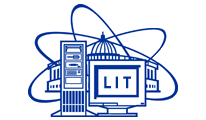|
|
|

|
PROGRAM LIBRARY JINRLIB ASYMPT - a program for calculating asymptotics of hyperspherical potential curves and adiabatic potentialsAuthors: A.Abrashkevich, I.V.Puzynin, S.I.Vinitsky |
|
|
|
|
Language: Fortran Nature of problem: The purpose of this program is to calculate asymptotics of hyperspherical potential curves and adiabatic potentials with an accuracy of O(rho**-2) within the hyperspherical adiabatic approach [3,4]. Corrections to matrix elements of potential coupling are calculated as well. The program finds also the matching points between the numerical and asymptotic adiabatic curves within the given accuracy. The adiabatic potential asymptotics can be used for the calculation of the energy levels and radial wave functions of doubly excited states of two-electron systems in the adiabatic and coupled-channel approximations and also in scattering calculations. Solution method: In order to compute the asymptotics of hyperspherical potential curves and adiabatic potentials with an accuracy of O(rho**-2) the corresponding secular equation is solved. The matrix elements of the equivalent operator corresponding to the perturbation rho**-2 are calculated in the basis of the Coulomb parabolic functions in the body-fixed frame. The asymptotics of potential curves and adiabatic potentials are calculated within an accuracy of O(rho**-2) using the eigenvalues of the corresponding secular equation. Zeroth-order asymptotic wave-functions are used to calculate the relevant corrections to the potential matrix elements. Restrictions: The computer memory requirements depend on: Restrictions due to dimension sizes may be easily alleviated by altering Unusual features: The program uses the subprograms: RS [1], SPLINE and SEVAL [2]. Journal reference: Computer Physics Communications 125 (2000) 259 References:



|
|

